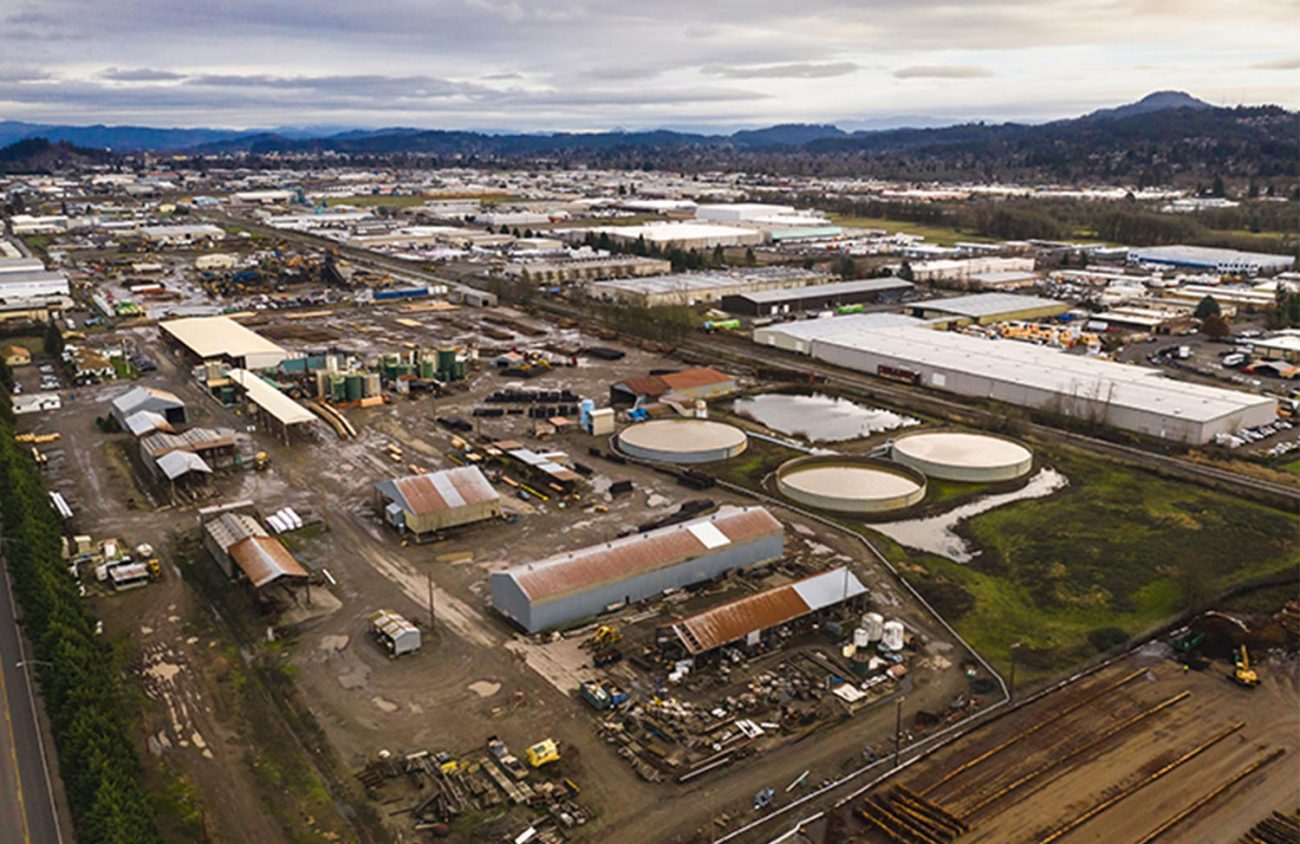Arjorie Arberry-Baribeault said a friend who she had grown up with reached out to her one day, with concern in her voice.
It was someone she knew from her time growing up in west Eugene, one of the most polluted areas in Lane County.
“I feel like my days are numbered,” she told Arberry-Baribeault, who recounted the anecdote during a March 3 panel at the 41st annual Public Interest Environmental Law Conference in Eugene.
Arberry-Baribeault, a community organizer with Beyond Toxics, said she has several friends who have died from cancer, and her daughter contracted Hodgkin’s lymphoma when she was a teenager. All of them lived in west Eugene, an area of town where industrial buildings operate next to residential housing and have the highest amount of toxins emitted in the air, according to a report by the city of Eugene’s Toxics Right-to-Know Program.
At the panel, Arberry-Baribeault, and policy analysts Mason Leavitt and Zach Mulholland, all with the environmental justice nonprofit Beyond Toxics, shared a potential solution which would work to reverse Eugene’s toxic and incompatible industrial zoning.
They said a public health overlay zone would create a buffer zone between industrial activities and homes, parks and schools, and would strengthen existing land-use rules to keep industrial facilities from expanding and releasing more toxic chemicals into the communities they are located near.
Perhaps the most notorious polluter is JH Baxter & Co.’s wood treatment facility, which shut down Jan. 21, 2021. The company received warnings and fines for hazardous waste and water quality violations for decades from government agencies.
JH Baxter was cited multiple times by the Department of Environmental Quality, Lane Regional Air Protection Agency and the Environmental Protection Agency for violations of air quality, water quality and hazardous materials handling standards. Many of those citations didn’t result in cash penalties, essentially a slap on the wrist of the company, Arjerry-Baribeault said.
JH Baxter’s controversial practices include burning off 1.7 million gallons of hazardous waste and allowing untreated stormwater to flow from its boilers into Eugene’s Amazon Creek, Arberry-Baribeault said during the panel.
A public health overlay zone wouldn’t require new city code, but a layer of zoning code that tweaks industrial zones, Beyond Toxics policy analyst Mulholland says, to not only regulate current polluters like JH Baxter, but also future uses of the industrial land to less damaging effects.
The overlay would add an additional set of zones that supersede the rules of the base zone, which currently allows for zoning that is incompatible with public health, Mulholland said.
Industrial areas with Title V permits, which allow for certain amounts of air contamination discharge, sit right alongside residences and parks, and gas stations are built right next to homes, said Mason Leavitt, GIS and Spatial Data Coordinator for Beyond Toxics. Gas stations produce high amounts of the toxic chemical benzine, which is linked to causes of childhood leukemia.
Leavitt suggested gas stations under the overlay zone could be gradually phased out, and incentives established for repurposing of existing gas stations to other, less polluting uses.
Beyond Toxics began advocating for a Eugene public health overlay zone for a year and a half, Arberry-Baribeault says. The panelists discussed that it’s not the first and only time the city has considered this type of solution to chronic pollution.
The city of Eugene passed a motion in February 2022 to schedule more work sessions analyzing the benefits and development criteria for a public health overlay zone, and in May held a work session reviewing the city’s regulatory authority on pollutants.
The Clear Lake Overlay Zone covers tax lots in an area between Clear Lake Road and Highway 99. Established in 2017, it prohibits industrial land uses in the area and supersedes the base zoning rules that already apply to industrial sites.
In their presentation, Beyond Toxics staffers proposed making a zone similar to the Clear Lake Overlay Zone to cover the entire city of Eugene.
Mulholland said that commercially zoned areas under the overlay would have to have a one-quarter mile buffer zone between industrial facilities and residential and park space, and would ban toxic land use practices that would permanently contaminate the ground under the facility.
Other jurisdictions in the U.S. have implemented similar zoning concepts, Mulholland said; LA Green Zones are designated areas around Los Angeles as having banned worst land uses, including asphalt mixing, wastewater treatment and chemical manufacturing, and required mitigating actions by industrial facilities and new development to prohibit future toxic land uses. Thurston County, Washington created a banned uses list, and created a standard if there’s a facility they haven’t conceived of, called “extraordinary” equipment.
Arberry-Baribeault says she is speaking out for her neighbors, and that nobody should have to suffer from negative health effects due to the negligence of one company.
The Eugene City Council held its first work session to discuss the key problems solvable by the public health overlay zone in May of 2022, and it is continuing to discuss the potential of this idea.
Arberry-Baribeault says Beyond Toxics, along with several neighborhood organizations, are planning to testify in support of a public health overlay zone at the next Eugene City Council meeting on April 10.
